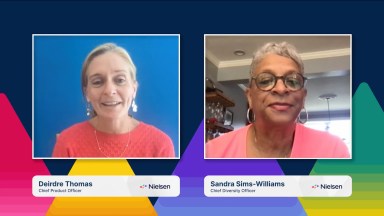
It’s primary season across the U.S., and political conversations are everywhere—and on every screen. Out for coffee this morning, I overheard an argument over who had won last night’s primary debate. The first person had watched the debate live at home, whereas the second person had only seen highlight clips of the morning news on social media.
In thinking about the abundance of content, new platforms and services, I started thinking about how this particular example highlights just how extensive and broad our multi-screen usage has grown—and across all age groups. The abundance of second- and third-screen usage is also prevalent across the country—not just major metros like New York, Chicago and San Francisco.
The Raleigh, N.C, designated market area (DMA), for example, has a TV universe estimate for adults 18+ of 2.4 million, and its residents are avid cross-platform news consumers, especially during primary season. In looking at reach, one of the market’s leading TV stations reaches 500,000 people each month. Importantly, that reach is split across platforms. Said differently, people in Raleigh don’t just get their news from the living room TV right before dinner.
We know that people are constantly connected to their devices for social media connectivity, texting with friends and leveraging digital channels for entertainment options that aren’t available across linear channels. But the lines between linear and digital are blurring. In Raleigh, half of the above-mentioned station’s audience watches its content on both traditional linear channels and digital ones (mobile, computer, tablet). Somewhat surprisingly, only 14% of adults 55-64 watch on just TV1.
Perhaps even more noteworthy is the audience that’s using multiple platforms—and the impact this has when you consider the upside for brands and advertisers. Specifically, the shift to multiple screens adds significant lift when we consider the audience members who are 55-64—a demo that marketers and planners and buyers typically exclude from their targeting efforts. Yet for this Raleigh station, the overall audience increases by 27% when viewing across all platforms includes the 55-64 audience2.
The engagement among the older demo is simply a reflection of the country’s overall population shift—one that has been happening over the past decade across the whole country, not just in Raleigh. Yet in Raleigh, 1.5% of the TV universe has transitioned from the 25-54 segment to the 55-643 segment. And when we look at multi-device usage among this older group, we see that this group of active news consumers is also contributing to the broadening reach that comes from growing cross-platform usage.
It’s been a while since marketers, planners, buyers and programmers were able to think about audiences through the lens of a single channel or platform, but it’s possible that older audiences haven’t been central in that thinking. Not only does the 55-64 demo outspend larger cohorts, it is continually leveraging different platforms and devices to stay informed and plugged into the ins and outs of the daily news cycle, especially when big political stories are breaking.
Notes
- Nielsen Local Media, Nielsen Local TV View, May 22, RDU DMA
- Nielsen Local Media, May 2022 Custom Cross-Platform, Deduplicated Reach Across TV & Digital, RDU DMA
- Nielsen Universe Estimates, 2012-2022
This article originally appeared on Broadcasting+Cable.



